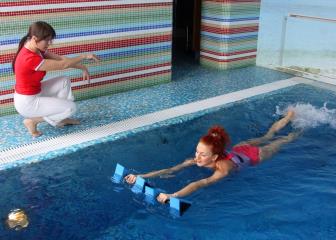What They Do
The What They Do tab describes the typical duties and responsibilities of workers in the occupation, including what tools and equipment they use and how closely they are supervised. This tab also covers different types of occupational specialties.
Work Environment
The Work Environment tab includes the number of jobs held in the occupation and describes the workplace, the level of physical activity expected, and typical hours worked. It may also discuss the major industries that employed the occupation. This tab may also describe opportunities for part-time work, the amount and type of travel required, any safety equipment that is used, and the risk of injury that workers may face.
How to Become One
The How to Become One tab describes how to prepare for a job in the occupation. This tab can include information on education, training, work experience, licensing and certification, and important qualities that are required or helpful for entering or working in the occupation.
Pay
The Pay tab describes typical earnings and how workers in the occupation are compensated—annual salaries, hourly wages, commissions, tips, or bonuses. Within every occupation, earnings vary by experience, responsibility, performance, tenure, and geographic area. For most profiles, this tab has a table with wages in the major industries employing the occupation. It does not include pay for self-employed workers, agriculture workers, or workers in private households because these data are not collected by the Occupational Employment and Wage Statistics (OEWS) survey, the source of BLS wage data in the OOH.
State & Area Data
The State and Area Data tab provides links to state and area occupational data from the Occupational Employment and Wage Statistics (OEWS) program, state projections data from Projections Central, and occupational information from the Department of Labor's CareerOneStop.
Job Outlook
The Job Outlook tab describes the factors that affect employment growth or decline in the occupation, and in some instances, describes the relationship between the number of job seekers and the number of job openings.
Similar Occupations
The Similar Occupations tab describes occupations that share similar duties, skills, interests, education, or training with the occupation covered in the profile.
2024 Median Pay
The wage at which half of the workers in the occupation earned more than that amount and half earned less. Median wage data are from the BLS Occupational Employment and Wage Statistics survey. In May 2024, the median annual wage for all workers was $49,500.
On-the-job Training
Additional training needed (postemployment) to attain competency in the skills needed in this occupation.
Entry-level Education
Typical level of education that most workers need to enter this occupation.
Work experience in a related occupation
Work experience that is commonly considered necessary by employers, or is a commonly accepted substitute for more formal types of training or education.
Number of Jobs, 2024
The employment, or size, of this occupation in 2024, which is the base year of the 2024–34 employment projections.
Job Outlook, 2024-34
The projected percent change in employment from 2024 to 2034. The average growth rate for all occupations is 3 percent.
Employment Change, 2024-34
The projected numeric change in employment from 2024 to 2034.
Entry-level Education
Typical level of education that most workers need to enter this occupation.
On-the-job Training
Additional training needed (postemployment) to attain competency in the skills needed in this occupation.
Employment Change, projected 2024-34
The projected numeric change in employment from 2024 to 2034.
Growth Rate (Projected)
The percent change of employment for each occupation from 2024 to 2034.
Projected Number of New Jobs
The projected numeric change in employment from 2024 to 2034.
Projected Growth Rate
The projected percent change in employment from 2024 to 2034.
2024 Median Pay
The wage at which half of the workers in the occupation earned more than that amount and half earned less. Median wage data are from the BLS Occupational Employment and Wage Statistics survey. In May 2024, the median annual wage for all workers was $49,500.
 United States Department of Labor
United States Department of Labor











